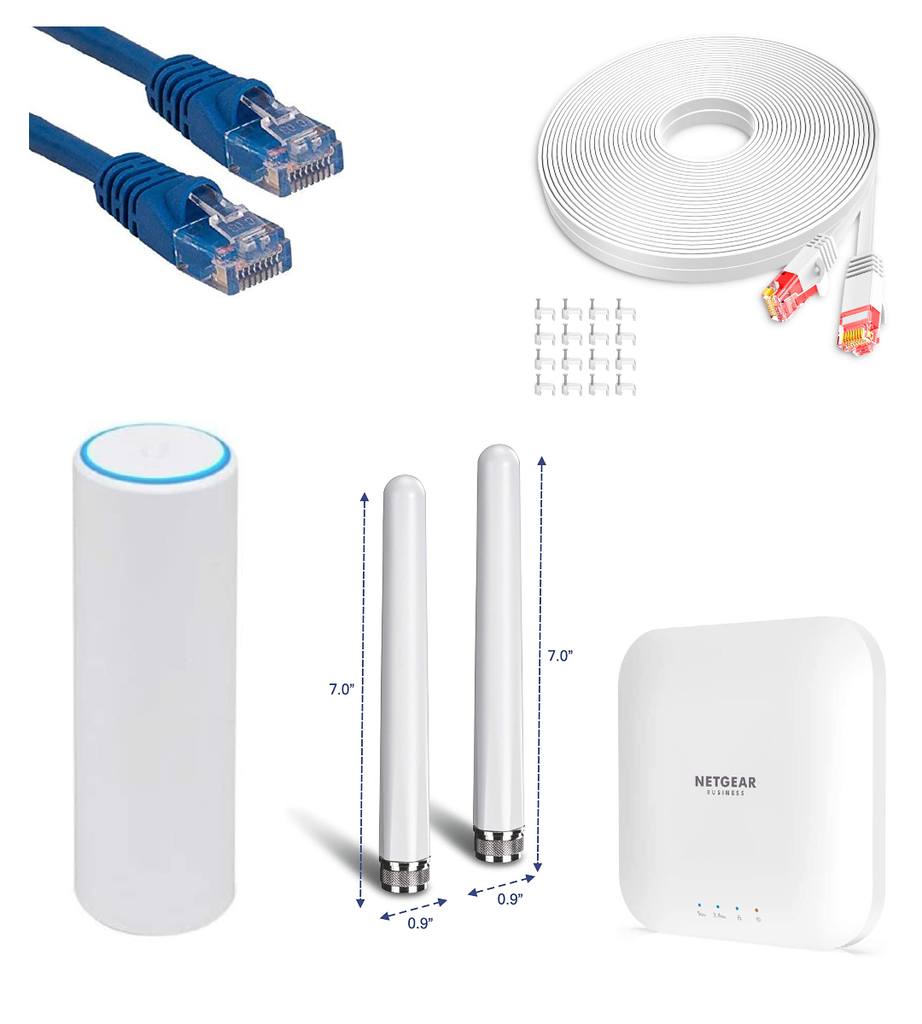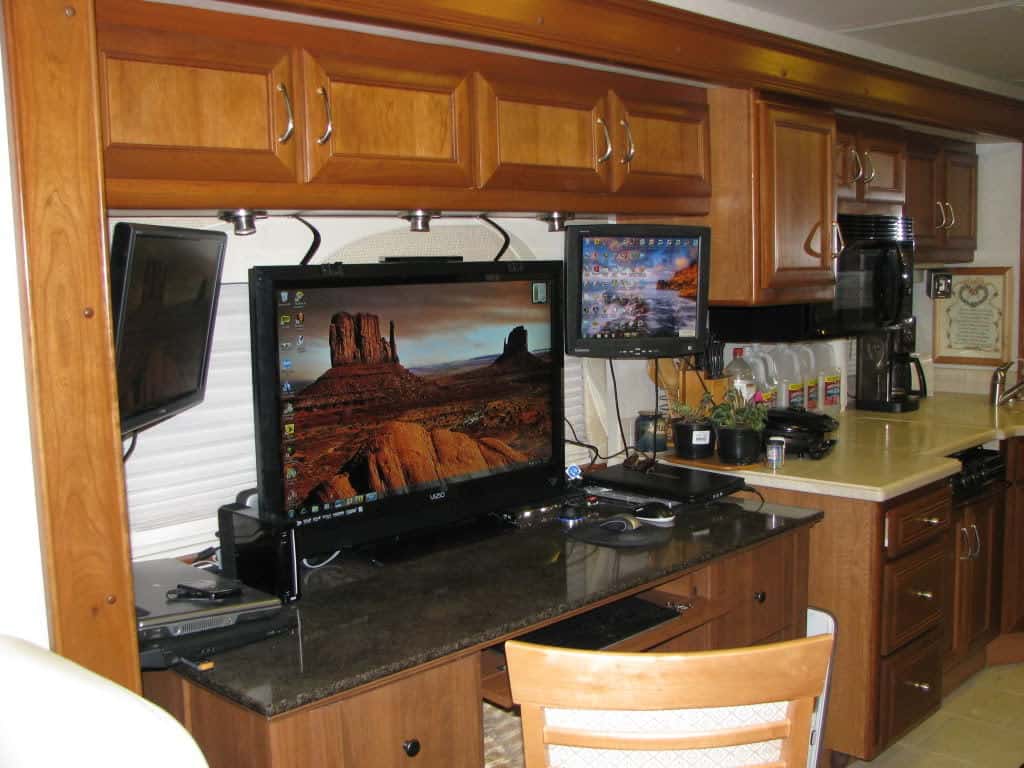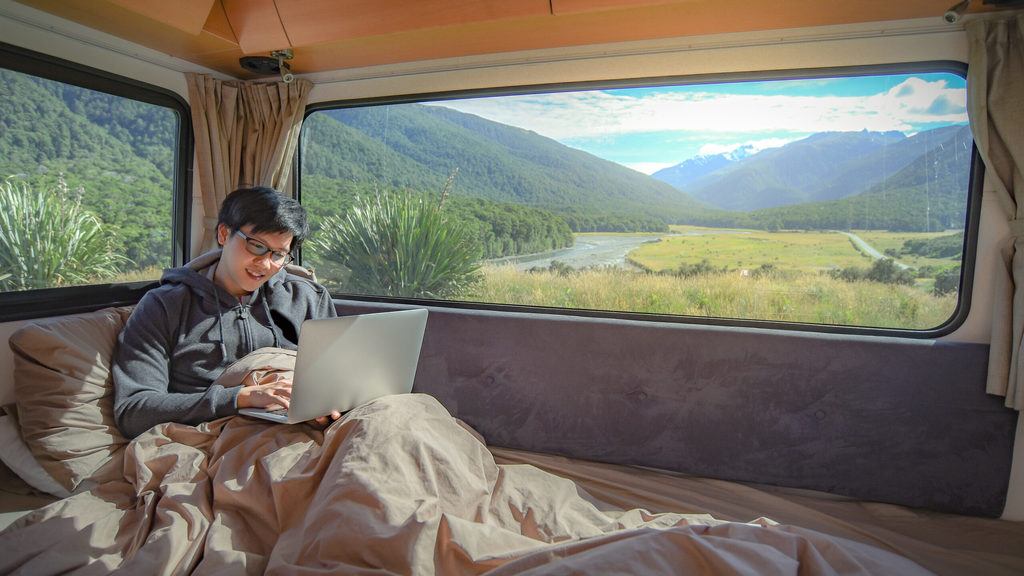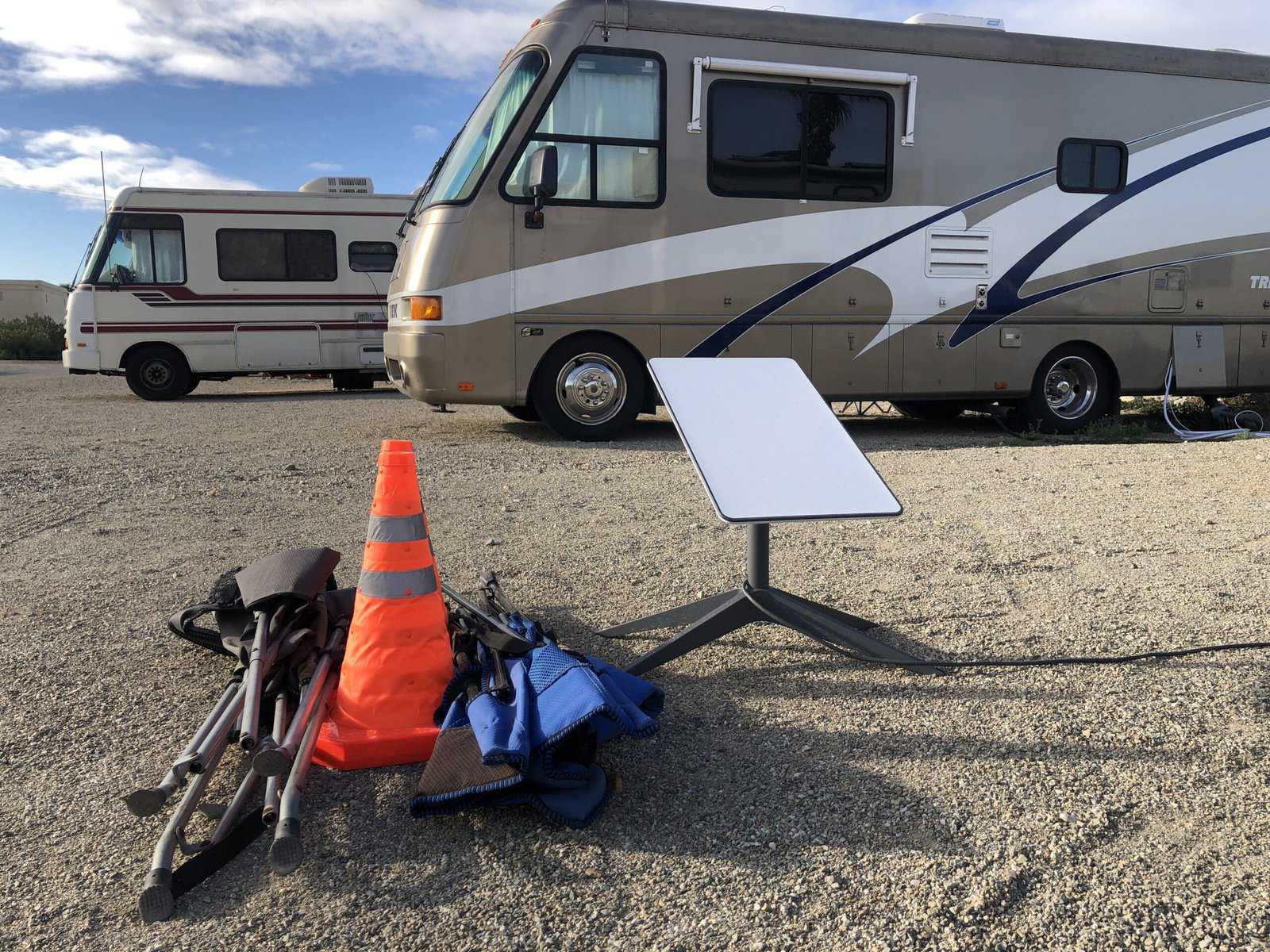Getting free internet RVing is like the holy grail for RVers. Many do get it. You see them going for it all the time. They pack campground clubhouses and park visitor centers trying to connect. These digital nomads sit scrunched in uncomfortable chairs all day while trying to work. Wouldn’t it be great if you could get free internet RVing, right from your own rig? You can. There’s a better way. Here’s how to get free internet on the road from your RV.
The Cheapskate Way to Get Free Internet RVing
I have researched how to get free internet RVing for a long time. Here’s my solution that works 90 percent of the time. The solution requires some hardware and software costs, and configuration. But don’t panic. At the end of the day, you can expect to have free internet when you travel.
Step 1: Get the Wifi hardware you need
To get free internet RVing, you need these 5 low cost hardware components. Brand doesn’t matter as much as function. This is what I found for my system. Yours may be different.

- 100-foot Cat6 ethernet cable
- 6-foot RiteAV Cat5e network ethernet cable
- Ubiquiti Networks UniFi FlexHD 802.11ac Wave 2 Wi-Fi Access Point (UAP-FlexHD-US)
- TRENDnet 5/7 dBi Outdoor Dual Band Omni Antenna Kit
- NETGEAR Wireless Access Point (WAX214PA)
You can find all the components for around $200. This is a small sacrifice when you consider the cost of mobile internet service on the road. Or, if you are stationary in your RV and paying a campground upcharge for internet service. It’s not unheard of to pay $55 a month for hard-wired internet access at RV parks. The cost of internet service all adds up. Now you can get online cheap.
Step 2: Find a spot for your internet access components

First, pick a spot in your RV for the components. The first thing to consider is where you are going to place your wireless access point. The next, is how you are going to run the 100-foot Cat6 cable to your Ubiquiti Bullet and Wireless antenna.
I mounted my Bullet and antenna on the existing TV antenna so that when I bring my TV antenna with the crank, it brings up the Celluteq antenna as well. It lays flat during travel making it a seamless system for RVing internet access.
You can also mount this setup on a flag pole style mount, but that will require you setup and tear down every time you move.
Step 3: Run the cable from the two devices.
- Run the cable as neatly as possible to connect the Bullet to the antenna with the N-style connector. Screw the two pieces together and you’re ready to go.
- Plug the Cat6 cable into the power over ethernet (POE) device provided with your Bullet.
- From the second port on the POE device, plug the 6-foot Cat6 cable in. Run that to the wireless access point connecting that to Port one of four.
Voila! Your hardware installation is complete.
Step 3: Configure the wireless access point software and the Bullet.
Using the documentation included with your wireless access point device, configure the wireless access point to meet your needs. Once you complete the configuration and you can connect your access point wirelessly, it’s time to configure the Bullet. Follow the instructions you received with your device.
Step 4: Look for free WiFi
Now for the fun part. You can get free internet RVing at most McDonalds, Starbucks, visitor centers, local libraries and other institutions. Even better is that you don’t have to sit inside coffee shops, bookstores, or the library all day.
For less than $200 you now have the ability to get online wherever and whenever you want! Surf the internet in your jammies, with your favorite snacks and your dog alongside you.
Now you can enjoy free internet on the road!

With this configuration, I have been able to pick up Wi-Fi from up to 1.7 miles away! I can do it even when surrounded by mountains. Free wifi is even possible from up to 3 miles away on flat terrain.
I hope this helps you enjoy free internet RVing. If it works for you, or you have a better way to get online RVing, share your experience below so we can all learn.

